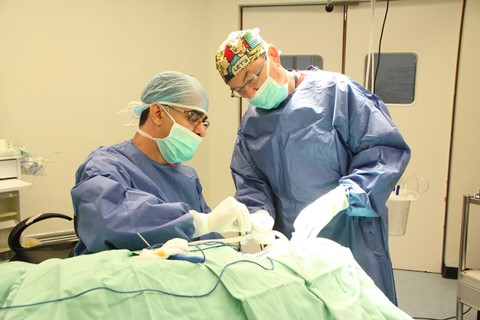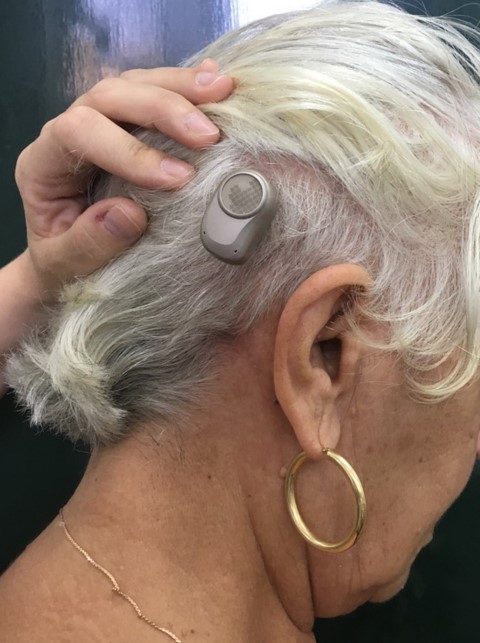For the first time at Hillel Yaffe Medical Center, Dr. Muhammad Taha, a senior physician in the Otolaryngology, Head & Neck Surgery Unit, implanted a bone-anchored hearing system in a 70-year-old woman from Or Akiva, who had been suffering from chronic deterioration of hearing for several years. The surgery, which was performed together with the head of the unit, Clinical Assistant Prof. Itzhak Braverman, is currently only performed at four medical centers in Israel, including Hillel Yaffe.
"Several years ago, the woman underwent surgeries to clean out the tympanic cavity following chronic ear infections. In the end, however, the surgeries led to a gradual loss of hearing," said Dr. Taha. "Due to deterioration of hearing, she went to get hearing aids, but they did not work for her, because she had space in her ear that interfered with her hearing. When she came to the clinic at Hillel Yaffe, we decided to see if a bone-anchored hearing aid, which is implanted subcutaneously in the bone behind the ear was right for her, because it was the optimal solution and virtually the only one given her condition. Before surgery, the patient spent several weeks with the device attached to her head externally to check if it was suitable for her."
The surgical technique, as well as the implanted device, are used relatively infrequently. Around the world, there have been only slightly over 5,000 implants. The reason for this is the high level of skill and extensive experience required of the surgeon, and also because the device is not a good fit for everyone and it is relatively expensive compared to other devices.

Clinical Assistant Prof. Itzhak Braverman and Dr. Taha while performing the surgery
Surgery with clear advantages
The PONTO bone-anchored hearing system is suited for people who have conductive and mixed hearing losses and suffer from deterioration in conduction of sound through the ear canal and the middle ear. The device is also suited for people with significant conductive hearing loss, for example, absence of the outer ear, and who are unable to benefit from the advantages of a standard behind- or in-the-ear hearing aid.
The major advantage of the surgery to implant the device is that it does not block the outer ear canal and therefore, if there is infection or secretions due to recurrent infection, the hearing aid does not need to be removed. Additionally, the sound quality the device transmits is better than a standard hearing aid.
The surgery itself takes between 30 minutes to an hour, under general anesthesia or sometimes under a local anesthetic. During surgery, the hearing aid is implanted in the bone behind the ear. The incision made to insert the implant is very small and has a low risk of infection. After healing, it is usually concealed by the patient's hair. The surgery is included in the health basket.
Today, several weeks after surgery, the patient reports a significant improvement in her hearing and her quality of life, and in other words - the surgery was a success and the patient is happy.

The hearing aid after being implanted












.jpg?BannerID=39)

